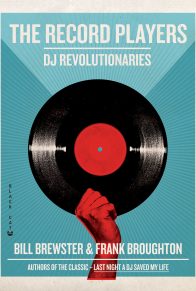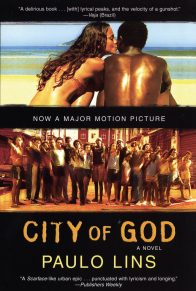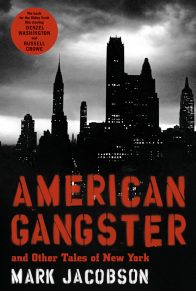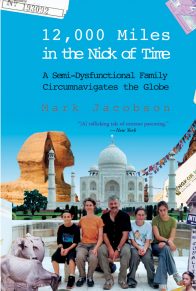Finally the dude with the fake fox collar meekly asked her for her autograph. Pam loosened a little and signed. “OOOO-eeee,” the other guy said, “you are dangerous. What would happen if I tried to get next to you?” Pam squinted again and sent a look that said, “You can try me.” With that, the dudes got themselves lost under the marquees.
It was just like a Pam Grier movie, except nobody got shot in the groin. When people try to get next to Pam Grier, they usually wind up being very sorry. In a long series of films that will never be reviewed by John Simon, Pam has made a living out of beating up men. She gun-butted them in Black Mama, White Mama, cast voodoo spells over them in Scream, Blacula, Scream, ran them through with spears in The Arena. In Coffy, Pam was at her most outgoing: she blasted a pusher’s head off, stabbed a kinky hit man in the eye with a bobby pin, ran a mafioso over in a Dodge, and blew away three different sets of genitals with a double-barreled shotgun.
Like the dude said, this lady is dangerous. She might even shake up a few preconceptions about blacks and women in today’s movies. For one thing, those funky films she’s been making have raked in prodigious amounts of money. Coffy has grossed more than $8.5 million (it cost about $700,000), and Foxy Brown, another nut-cruncher, has done almost as well. Pam Grier is now spoken of as a “bankable star,” the only black woman around who fits that description.
The vast majority of the white audience doesn’t know much about Pam. That’s because, until now, she has been doing her “tough mama” number in what white reviewers generally call “blaxploitation movies.” “Tough mamas’ have been the thing in black movies for a few years now. There has been Cleopatra Jones, with Tamara Dobson; Savage Sisters, with Gloria Hendry; and also TNT Jackson, with Jeannie Bell. “Tough mamas’ do much the same things as ‘mean street brothers’: bust up slews of lowlife black hustlers, then stick it to the white baddies who really run things, getting laid a lot along the way. It’s mostly comic-book stuff. But after the roles black women have traditionally played on the screen, it’s got to be a step forward. No one would ever call Pam Grier a victim, not to her face, at least. At twenty-five, she’s the toughest mama.
Since Coffy, in which she can be seen reading Ms. magazine (open to the Lost Women section), Pam Grier has become a heroine. More specifically, a black woman’s heroine. She talks street self-sufficiency and attacks the macho’s last refuge, his muscles. I saw one woman in a Forty-second Street theater smack her boyfriend’s arm as Pam was icing half the Roman army in The Arena. The woman said, ‘see, fool, I’m going to get myself together like her, so next time you think you’re Superman, watch out.” Pam herself says, “It makes sense that strong women would come out of black films. The woman has always been the strength of our family. Because if one thing has always been true, it is that black boys are terrified of their mamas.”
In her beige suite at the Regency on Park Avenue, physically a long way from Forty-second Street, Pam sits with her leather pant legs crossed, eating twelve dollars worth of fresh strawberries and talking about power. “Look,” she says with a voice that seems to wrap around your windpipe, “I read a lot of scripts these days and most of them are terrible. Really bad. Or maybe the script isn’t so bad and they mess it up in the production. Like Sheba, Baby. They get some guy to direct it who doesn’t know what he’s doing. I knew I could have done a better job, but they told me to sit down, you’re only the actress, don’t tell us what to do. So right now I’m setting up my own production company. I know I can do it. I read the trades, I know I’m big. I can get investors. And I’m going to make movies the way I see fit. No threatless, mindless women. No dumb situations. I know I have to go slow. But I’m going to sneak up on them little by little and then I’m going to create a monster. This girl isn’t just another body for their cameras.”
Her message comes hard and fast. She’s learning everything she can about film by taking cinema courses at UCLA. She’s been having long discussions with her friend and mentor Roman Polanski. She will pay her young screenwriters out of her own pocket so she won’t owe anyone anything when the films are made (the first one being due “within a year”). She plans to become the first black woman to direct a major film.
Listening to Pam Grier is easy; trying to get next to her is harder. If you change your seat, she’ll change hers. We’ve been jockeying around this hotel room for hours. Even though she isn’t as overwhelming as she seems in the movies–about five feet eight and an almost skinny 121 pounds–she still looks dangerous. Her eyes are electric, dark, and smoldering, but she hides them behind bubble sunglasses; she won’t let you get lost in them. Her skin is light caramel. It looks five inches deep, and you want to roll in it. But that might not be too smart. Her body, which looks so supple in her films, is all sharp angles and athletic steel from her daily martial arts practice. And her nose, easily her best feature, juts away from her face defiantly–a warning, or a dare.
Pam says she just likes to “have her own space,” but you get the message that she isn’t the trusting type. She grew up on U.S. Air Force bases in Europe, maybe five or six of them, with her mother and father, an NCO who said “positive” and “negative” instead of yes and no. Eventually the family settled in Denver, where the English accent Pam had acquired on a base in London made her appear like a snot to her classmates. She remembers being teased and beaten up regularly. Later her boyfriend, whom she hoped to marry, volunteered to fight in Vietnam; he died there. Still in mourning, she was spotted at a Colorado beauty contest (she was the only black) by an agent who invited her to Hollywood. She ran the American International switchboard for a while, listening in whenever producers called to talk about young actresses. “You should have heard what they said . . . it was like ordering meat in a butcher shop. Pretty disgusting, really.”
In her first few months out West she depended on her cousin, Rosey Grier, the former football Giant turned actor, to show her around. But Rosey, she says, was too busy trying to project a slimmer image and wasn’t much help. He did, however, introduce her to Kareem Abdul-Jabbar. Kareem and Pam lived together for a while, until his Muslim religion got in the way. Kareem expected Pam to leave the house when his friends came over because Muslim men cannot tolerate the presence of women when they are discussing the affairs of the world. One day Kareem came home in a rage and screamed at Pam for wearing a bikini on the beach. That was enough.
The roles she began to get didn’t do much for her self-image, as a woman or as a human being. She mostly played “things.” Her first part was an anonymous piece of flesh in Russ Meyer’s Beyond the Valley of the Dolls. She played leopard women, Nubian princesses, and lesbian prison guards before she got a chance to be “a person” in Coffy. During this time, she was at the artistic mercy of men like Sam Arkoff, president of American International, whom Pam speaks of as ‘someone who can’t see past the cash register, someone who has a peanut brain.”
It sounds as if Pam plans to blast her way through the motion picture industry as easily as she brings a mafioso to his knees in her movies. But there are parts of her that don’t seem to fit the quicksilver image. A hard-bopping feminist, she can’t stop talking about all those beauty contests and who is pretty and who’s really a dog. Also, the tough street mama doesn’t want to go outside the Regency. Forty-second Street makes her nervous. She looks down the street and asks if it really is true that ‘down there” is where her films make their money. This morning Pam jogged up and down Park Avenue; her friends in L.A. told her Central Park was full of muggers.
Pam has other worries, too. Her image is about to be transformed. Now she’s beginning to look on her “tough mama” movies as part of her “film adolescence.” She’s more interested in doing things like Alice Doesn’t Live Here Anymore and A Woman Under the Influence. Starting with her next picture she is changing her name to Pamela Grier. “”Pam” was all right for those action pictures,” she says, “but I can’t spend my whole life wrestling.” But breaking into “the general audience market” is touchy for a black performer, especially an independent woman. Everyone is telling Pam she’s going to have to tone herself down. “They want me to be a noble slave or a doormat,” she moans. “I can’t end up like Sidney Poitier, he’s pure Saran Wrap.”
For a star, Pam’s got a dumpy hotel room. You’d figure a big-money maker would at least have a view of the avenue. Pam sneers at the wall outside the window, blames it on American International, and says she’s restless. But she’s in town only for interviews, has never spent any time in New York, and doesn’t know anybody. Finally we decide to go to the Hollywood, a discotheque on West Forty-fifth Street that some of Pam’s L.A. friends talk about.
The Hollywood has seen better days. Its clientele has always been young and gay, but now the place has lost its glitter. The music is loud, so we dance–there’s nothing else to do. Pam is the whole show. She’s changed her clothes and is wearing a slinky knit dress that clings. Her hair rises in a great wave away from her unlined forehead. Her nose cuts through the cigarette smoke. Her dance style isn’t flamboyant; it’s close and clipped, more athletic than sensual. She’s not interested in holding hands.
The floor is filled with gay white men. In her four-inch heels, Pam is one of the tallest people in the place. A towering, gorgeous black woman surrounded by a hundred men with skinny behinds. After a couple of tunes, she asks if we can leave. On the way out a squat man in a black leather jacket and a tiny fedora stops us. He looks like one of the Sicilian heavies Pam throttles in her films. He says he’s got a piece of the Hollywood and wants to take Pam’s picture and put it on the wall. His eyes are plastered to Pam’s breasts the whole time he talks; she pretends not to notice.
In the limousine, Pam lets out a deep breath. She slouches and tells the chauffeur to drive up and down the avenues. She looks exhausted. She’s been on tour to promote Sheba, Baby for about a month now. It was part of her contract and she’s doing her best even though she hates the film. But now all the hotel rooms and limousine rides and acting tough to the superflies who want to steal a kiss are beginning to take their toll. Her backbone, which has been starched all day, is folding against the velvet of the limo seat and she feels like talking.
“You know,” she says wearily, “I really only started to think about things about a year ago, I mean really think. Right now I’m just scratching the surface. I think I’d rather just make movies for black people. You know, just be satisfied with what I’m doing. But I can’t. I’m too ambitious. I want all the acclaim. That bothers me. I think if I weren’t an actress, I’d be a doctor by now. I’d have to, because I’m the first generation of moneymakers in my family, and I can’t blow it now.”
After nearly fifteen hours together, Pam and I are almost friends. We’ve played Pong in the arcades and had footraces in Central Park. She says I must be “from the Bronx or something” because my questions are “intellectual.” She’s sitting, almost curled into a ball, on one of the cream Regency couches, looking very tender. She takes off her sunglasses and invites further discussion. I tell her about the Brooklyn graffiti artist who has been writing, “That’s good for her, what about the rest of us niggers?” on the glossy subway ads for Sheba, Baby. She doesn’t want to hear that. She starts to tense again. “Everyone thinks I have an Eldorado. Well. I don’t have an Eldorado. I have a Jeep. Eldorados are for fools; they waste too much gas.” Then she says the guy ought to get an education so he won’t spend time writing on walls. I ask her about a Ms. magazine piece that asserts that much of the violence in her films only serves to separate women by assuming that black women are athletically superior to white women. Now Pam is pissed off. “What do they know?” she rails. “They’re just a bunch of rich bitches. What do they know about my problems?”
I can see it was a mistake–one hassle too many–and try to change the subject to her nose. I like it a lot, I tell her. “Yeah,” she says tersely, “they used to call me hawk in school. You want to come over here and punch it?” I say I was only kidding, but it sounds like a dare, so I do it. I stand in front of her, legs spread, menacing her flared nostrils with a clenched hand. It is the closest we’ve been to each other since we met. Suddenly her mouth twists. Before I realize it, a fist is heading toward my groin. I try to block it, but it is too late. As I stumble across the thick Regency rug, Pam Grier says, ‘see, see what I have to do to defend myself?”
Copyright ” 2005 by Marc Jacobson. Reprinted with permission from Grove Atlantic, Inc. All rights reserved.













